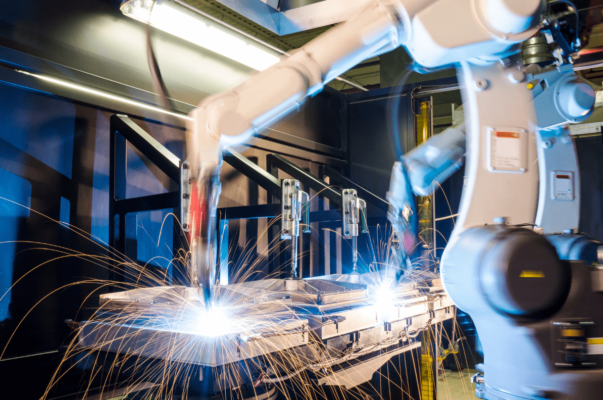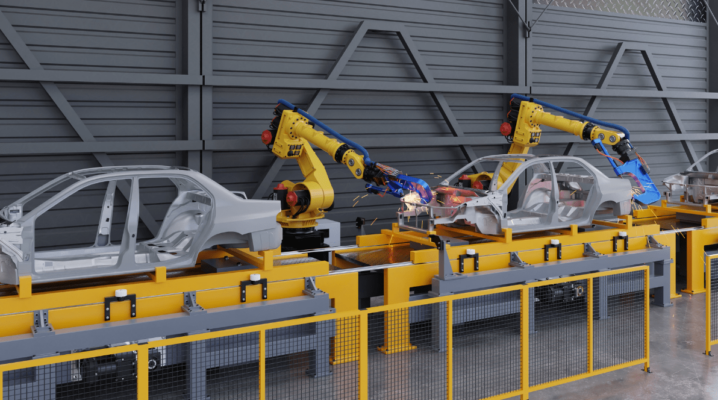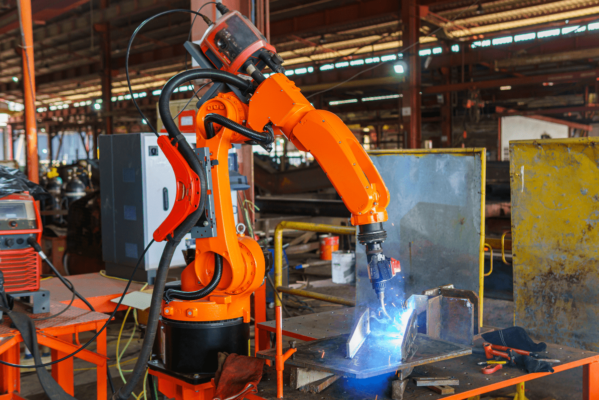When upgrading your manufacturing line with robotic welding, knowing the costs is essential. Robotic welding automates tasks, boosting productivity and precision. This article will break down the costs from purchasing the robot to the ongoing expenses.
By the end, you’ll understand what you need to budget for transitioning to robotic welding, helping you make an informed decision that fits your needs and budget.
Basics of Robotic Welding:
What is Robotic Welding?
Robotic welding uses machines to perform welding tasks automatically. It’s more accurate and consistent than manual welding, making it ideal for repetitive jobs in large-scale manufacturing. This method ensures all welds are of uniform quality, important in industries where precision is key.
Robotic welding not only speeds up production but also reduces errors and physical strain on workers, improving safety. It’s a reliable choice for producing anything from car parts to complex electronics, boosting efficiency and product quality.
Types of Robotic Welding Technologies:
Different robotic welding methods suit various industrial needs:
- Spot Welding: Quickly joins sheet metal, commonly used in automotive production.
- MIG Welding (Metal Inert Gas): Fast and versatile, suitable for both thick and thin materials. It’s popular in construction and manufacturing.
- TIG Welding (Tungsten Inert Gas): Offers high precision and clean welds, essential in aerospace and high-tech industries.
- Laser Welding: Provides ultra-precise, high-speed welding, perfect for small and delicate parts.
These technologies automate important welding tasks, increasing productivity and weld quality. They help you effectively handle everything from heavy metals to detailed components.

Components of a Robotic Welding System:
Robot Hardware:
The core of a robotic welding system is the robot itself, often the costliest component. It’s important to choose a robot that fits your needs for speed, accuracy, and handling capacity. Brands like UR (Universal Robots) are known for their flexibility and easy integration.
Welding System:
This includes the power supply and controls needed for the robot to weld. It powers and manages the welding operation to ensure consistent, high-quality results. More complex setups might also have additional items like wire feeders and coolers.
Welding Gun & Tooling:
The welding gun is where the welding takes place, with different types available for MIG, TIG, or Laser welding. Extra tools might include jigs or fixtures that hold parts in place, improving accuracy and safety.
Safety Features:
Safety is crucial in robotic welding. Key safety features include protective barriers, emergency stops, and sensors to detect hazards, protecting workers and meeting safety standards.
Consumables:
Consumables such as welding wire, gas, and electrodes are essential for operation and need regular replacement, affecting overall costs.
Understanding these components helps in selecting the right robotic welding system that meets your production requirements and budget.

Cost Factors in Robotic Welding:
Initial Purchase & Installation:
The upfront cost of a robotic welding system ranges from around $50,000 for simpler models to more than $150,000 for advanced systems. This includes the robot, welding gun, control systems, and initial software. Installation costs depend on the complexity of the system and your facility’s needs, typically adding an additional $10,000 to $25,000 to the total.
Operational Costs:
Monthly operational expenses include electricity and consumables such as welding wire, gas, and electrodes. Depending on production volume and welding type, consumables can cost between $1,000 and $3,000 monthly. Electricity costs vary by location but generally add a few hundred dollars more to monthly expenses.
Maintenance & Repairs:
Regular maintenance is critical to keep the system running smoothly, costing about $2,000 to $5,000 per year. This includes inspections, lubrication, and part replacements. Repairs, especially for critical or unexpected issues, can quickly escalate, potentially costing thousands, depending on the severity and parts required.
Programming & Software Updates:
Initial programming might range from $3,000 to $10,000. Software updates and reprogramming for new tasks or products could also require similar investments periodically. For systems that require frequent updates or complex programming, costs can be higher, especially if external specialists are hired at rates typically ranging from $100 to $150 per hour.
Understanding these costs helps you plan your budget effectively, ensuring your robotic welding investment meets both your production needs and financial plans.

Choosing the Right Robotic Welder:
Assessing Needs:
Start by pinpointing exactly what you need from a robotic welder. Consider the types of materials you’ll be welding, the size of your production, and your current setup to ensure the new system fits in seamlessly. This will help you identify the features most important to you, whether it’s handling heavy materials or fitting into a compact space.
Comparing Options:
Look at more than just the price when choosing a robotic welder. Assess each model’s capabilities, such as material thickness it can weld and its operation speed. Make sure the welder works well with your existing equipment. Brands like Universal Robots and Fanuc are known for compatibility and ease of use. Also, check the programming features and any software that could make operation easier.
ROI Consideration:
Calculate the return on investment by considering how much the robotic welder will speed up production and reduce labor costs compared to your current methods. Factor in not just the upfront costs but also ongoing expenses like maintenance and supplies. A good robotic welding system should pay for itself within a few years through increased efficiency and lower waste.
Example Calculation:
Suppose your current manual welding operations cost $50 per hour for 8 hours daily, totaling around $100,000 annually. You’re considering purchasing a robotic welder for $120,000, with yearly maintenance and operational costs of $5,000.
Current Manual Welding Costs:
- Annual labor: $100,000
Robotic Welding Costs:
- Initial robot cost: $120,000
- Annual maintenance and operations: $5,000
Cost Analysis:
- First-year robotic welding total: $125,000
- Ongoing yearly costs after purchase: $5,000
If the robotic welder cuts welding time in half and maintains quality, you could reduce annual labor costs to $50,000. Besides saving on labor, the welder could increase weld quality and reduce waste.
ROI Calculation:
- First-year savings: $50,000
- Savings each following year: $95,000 (from ongoing labor cost reduction minus operational expenses)
This means the robotic welder could pay for itself in about 2.5 years. After this, it continues to provide significant annual savings. This example highlights the long-term financial and operational benefits of investing in robotic welding.
When choosing a robotic welder, it’s crucial to evaluate your specific needs, compare different models carefully, and understand the potential financial return. This ensures your investment boosts your production efficiency and profitability effectively.
5 Advantages of Robotic Welding:
Increased Precision & Consistency:
Robotic welding provides unmatched accuracy and uniformity. Robots execute welds based on precise specifications, greatly reducing defects and ensuring high-quality output consistently. This is crucial in industries where every weld must meet strict standards.
Enhanced Productivity:
Robots work non-stop without breaks, fatigue, or shift changes, boosting productivity. They complete welds faster than humans, speeding up production and increasing output, which helps businesses meet growing demand efficiently.
Improved Safety:
Using robots for welding reduces human exposure to hazardous conditions such as heat, sparks, and fumes. This lowers the risk of injuries and helps companies comply with safety regulations, reducing accident-related costs.
Cost Efficiency Over Time:
Although starting with robotic welding requires investment, it saves money in the long run. Robots cut down on the need for skilled labor, which is expensive and scarce. They also reduce waste and the need for redoing work, thanks to their precision, contributing to lower operational costs and faster investment returns.
Flexibility & Scalability:
Robotic welding systems can be easily reprogrammed and adjusted for different tasks or changes in production. This adaptability ensures they remain useful as your business grows or changes. Robots can also be scaled by adding more or reassigning existing ones, giving businesses flexibility in production capacity.

Conclusion:
In conclusion, investing in robotic welding can greatly improve your manufacturing processes. You will see increased accuracy, faster production, and better worker safety. The initial cost is high, but the long-term savings and consistent quality make it worth it. Robotic welding adapts to your needs, becoming a valuable long-term asset. If you want to boost efficiency and stay competitive, robotic welding is a solid choice.






